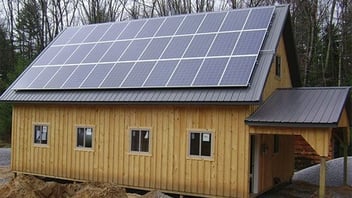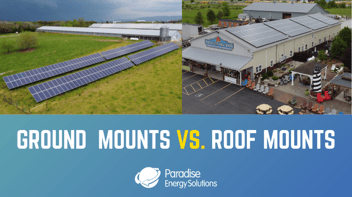Rail Mounted Solar Systems vs. Rail-less Solar Systems
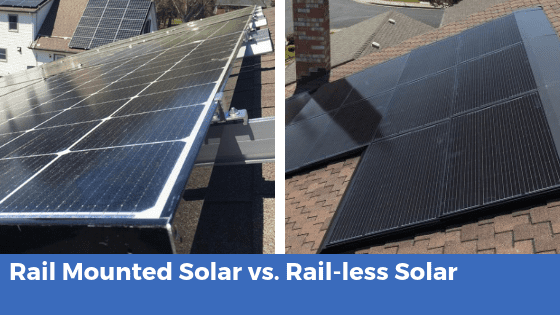
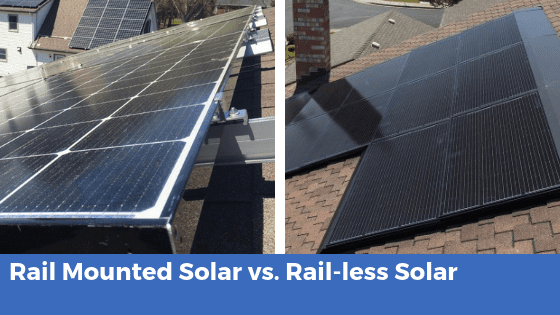
You've likely already done research on how solar energy works and the financial benefits. Great! There are still important questions that need to be answered, like what type of solar mounting system you would like to use. There are two main mounting variations for rooftop solar - rail mounted and rail-less; the most widely used method being the rail mount. This article compares rail mounted and rail-less racking solutions available for residential shingle rooftops and identifies the pros and cons of each.
Paradise Energy Solutions does not currently offer DecoTech Roof Integrated Solar or any other rail-less solution. We offer a variety of rail mounting solutions that allow us to customize our system designs to best meet customer’s aesthetic and financial needs. However, we realize rail mounted solar isn't for everyone. So take a look at the comparison below.
Similarities Between Solar Racking with Rails and Without Rails
- They can be integrated when the roof is first installed or later after the roof is already on the house
- Roof warranties (if one exists) are typically not impacted by either mounting method
- Both should be installed by professionals - with proper installation the system will protect the rooftop and keep the roof watertight
- The price variation is a few cents per kW, a very small proportion of the overall system cost
- Both types integrate with inverters similarly
How Both Systems Work
Standard Rail Mounted Solar:
This method uses a flashing to attach onto the existing rooftop. The flashing is similar to what would be used for a standard roof vent. An “L” foot or support component is then fastened to this flashing and holds the aluminum/steel rail 2-4 inches above the rooftop, upon which the solar panels are mounted.
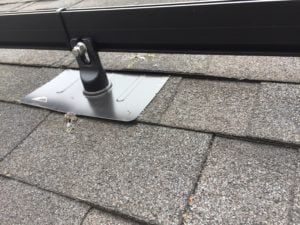 Standard Rail Mounted Solar - Before Panels Are Installed
Standard Rail Mounted Solar - Before Panels Are Installed
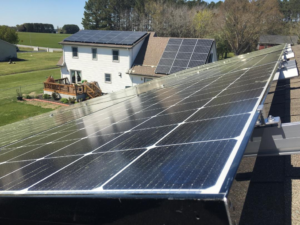 Standard Rail Mounted Solar With Panels Installed
Standard Rail Mounted Solar With Panels Installed
The Pros for Standard Rail Mounting:
- Can be used with almost any kW module in the colar of your choice
- Rails themselves are available in silver/black to blend with the rooftop if desired
- Many manufacturers offer flashing to help blend in with the rooftop and keep rodents out
- Conduit/wires can be run through the rooftop or across the rooftop
- Most manufacturers have been around for a long time and have long histories of success
The Cons for Standard Rail Mounting:
- Rails add additional weight to the roof which could mean older/less engineered buildings may not support the additional load
- The solar system is more prominently displayed as it sits several inches above the shingles
- When installed without flashing, equipment is more accessible to rodents/weather
Summary:
Overall, standard rail mounted solar offers the most flexibility when it comes to system design, and with its long history of success in the industry, it continues to be the popular choice for homeowners. These systems typically stand out on a rooftop, although there is equipment available that is designed to blend with the existing roof.
Rail-less Mounted Solar:
This more of a low profile mounting method. Systems typically use multiple attachment points on the rooftop and attach to each panel individually, eliminating the need for rails.
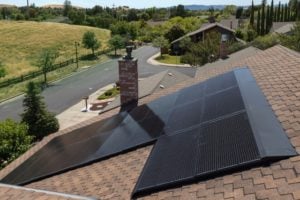 DecoTech Roof Integrated Solar System. Picture Credit:SolarBuilderMag.com
DecoTech Roof Integrated Solar System. Picture Credit:SolarBuilderMag.com
The Pros of Rail-less Solar:
- Sleeker, less noticeable design
- Offered with flashing that helps blend the system in with the roof and keep rodents/weather out
- Less weight on rooftop means it may be more compatible with older/less engineered buildings
- Wires are contained beneath the array and hidden from view
The Cons of Rail-less Solar:
- Limited to darker module types which are typically more expensive and not as highly rated in kW
- Wires and conduit must be run through the rooftop, leaving no option for conduit across the rooftop or down the side of the building
- Less common and newer products may mean a higher risk of problems during the install or long-term as well as the presence of fewer experienced installers
- There are fewer product manufacturers versus rail mounted system. Two of those brands are DecoTech Roof Integrated Solar and Quick Mount PV
Summary:
Overall, rail-less solar (DecoTech Roof Integrated Solar) offers a low profile solar system for the visually conscious customer. With no rails and flashing along the edges, installation is clean and less noticeable from the street, with a little less customization than what's available for rail mounted systems.
Picking Between Rail Mounts and Rail-less Mounts
There are no right or wrong choices when it comes to picking a mounting method for your solar system. Picking between the two primarily comes down to a cosmetic decision. Solar is a long-term investment, so it’s important that you spend time examining both options to find what’s best for you. To help you in your decision process, we suggest answering the following questions:
- What goals are you trying to accomplish with solar?
- Which mounting method accomplishes those goals in the most cost-effective manner?
- Where is the best location for the solar system and how much usable space is available there?
- Are you working with a trusted solar professional who will be around to honor production guarantees and workmanship warranties?
Do you want help answering these questions or do you have other questions about solar?
Our team of solar experts is here to help guide you in finding the best solution for you. Start the conversation by sending us a message or calling us at 877-851-9269.

